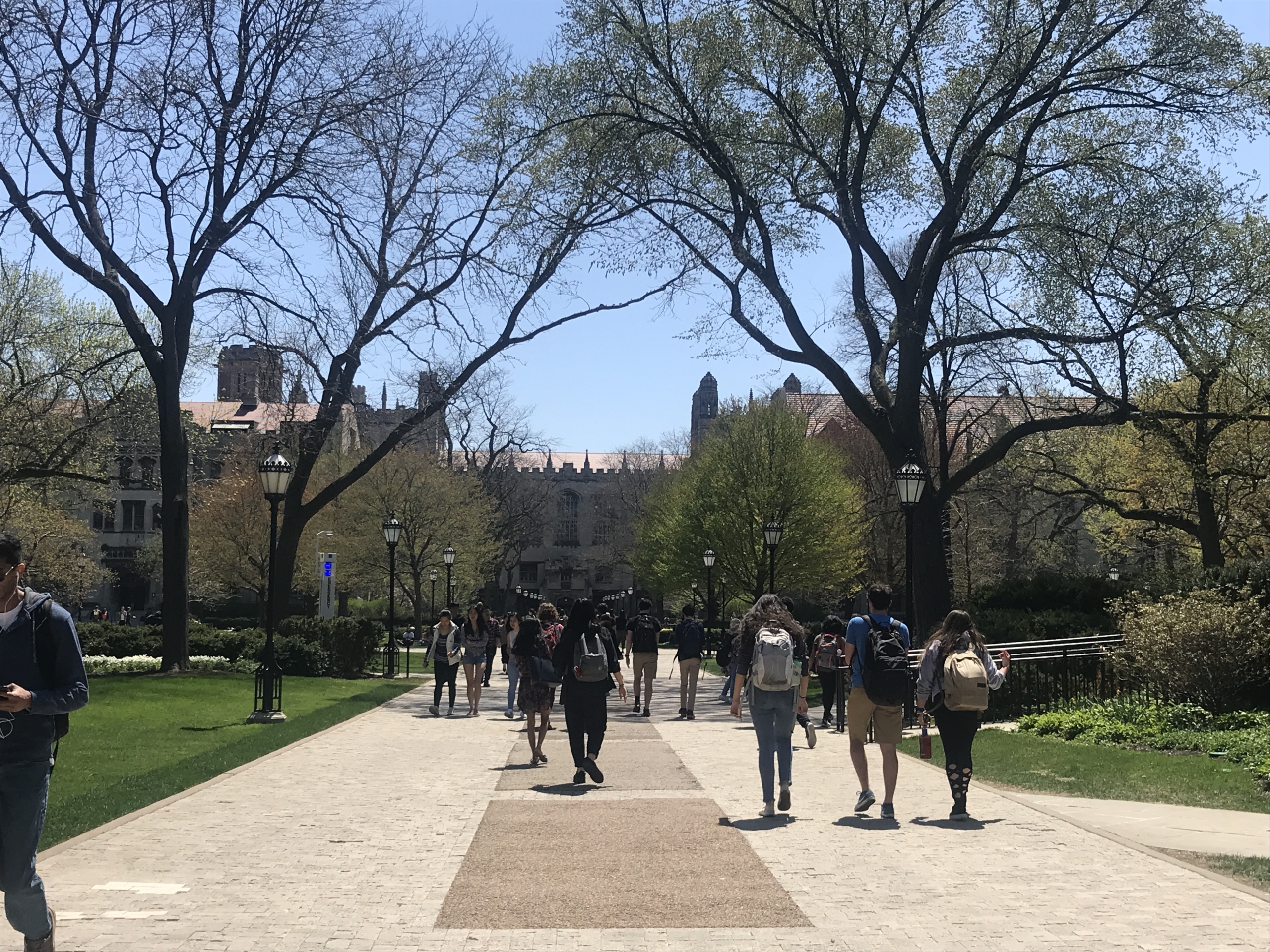CSR In the Field – The University of Chicago Booth School of Business

Report on the Corporate Social Responsibility Practicum and its Alignment with Sustainable Development Goals
1.0 Program Inception and Foundational Goals
In 2018, a partnership was initiated between the University of Chicago Booth School of Business and Vanguard. The project, facilitated through the Rustandy Center for Social Sector Innovation, was designed to assess and provide recommendations on disability inclusion within the corporation. This initiative directly addresses key United Nations Sustainable Development Goals (SDGs), including:
- SDG 10: Reduced Inequalities – By focusing on fostering an inclusive environment and improving the attraction and retention of people with disabilities.
- SDG 8: Decent Work and Economic Growth – By promoting full and productive employment and decent work for all, including persons with disabilities.
The success of this initial project led to the establishment of a dedicated lab course, the Corporate Social Responsibility Practicum, designed to explore the role of business in society through the lens of CSR, Environmental, Social, and Governance (ESG) criteria, and sustainability.
2.0 Educational Framework and Contribution to SDG 4
The practicum provides a unique educational model that contributes to SDG 4: Quality Education, specifically Target 4.7, which calls for ensuring all learners acquire the knowledge and skills needed to promote sustainable development.
2.1 Course Structure
The lab course offers students experiential learning opportunities that traditional coursework cannot provide. Students engage directly with corporations on pressing social and environmental challenges, developing practical solutions and insights. The course has become an integral component of Booth’s “Business, Society & Sustainability” concentration.
2.2 Program Growth
- Initial Phase: The program began with a cohort of 10 students working on two projects with Vanguard’s global head of diversity, equity, and inclusion.
- Current Status: Enrollment has nearly doubled, with the practicum now engaging three corporate partners per session.
- Future Ambition: The program aims to expand its capacity to engage five corporate partners per practicum, thereby increasing its impact and educational reach.
3.0 Corporate Partnerships and Advancement of SDG 17
The practicum exemplifies SDG 17: Partnerships for the Goals, which encourages and promotes effective public-private partnerships. The Rustandy Center serves as a crucial intermediary, sourcing projects from a growing pipeline of corporations seeking to address sustainability challenges.
3.1 Key Corporate Partners
The program has successfully executed social impact projects with a diverse portfolio of global companies, including:
- Allstate
- Hyatt
- Kraft Heinz
- Mondelēz
- WM
- DuPont
- AB InBev/EverGrain Brewing
These collaborations demonstrate a commitment from the business sector to engage with academia to advance the sustainable development agenda. The primary limiting factor for program expansion remains the acquisition of high-quality projects with strong corporate engagement, underscoring the critical nature of these partnerships.
1. Which SDGs are addressed or connected to the issues highlighted in the article?
-
SDG 4: Quality Education
- The article is centered around a “lab course” and “practicum” at Chicago Booth. This educational program provides students with practical knowledge and skills in corporate social responsibility, ESG, and sustainability, directly contributing to quality education.
-
SDG 8: Decent Work and Economic Growth
- The initial project with Vanguard focused on “disability inclusion” and “attracting and retaining people with disabilities.” This directly addresses the goal of promoting inclusive and productive employment for all.
-
SDG 10: Reduced Inequalities
- The course’s work on “disability inclusion” and “diversity, equity, inclusion” aims to reduce inequalities by fostering inclusive environments within corporations for marginalized groups, specifically people with disabilities.
-
SDG 17: Partnerships for the Goals
- The entire model described is a partnership between an academic institution (Chicago Booth’s Rustandy Center) and private sector companies (Vanguard, Allstate, Hyatt, etc.) to tackle social and environmental challenges.
2. What specific targets under those SDGs can be identified based on the article’s content?
-
Target 4.7: Education for sustainable development and global citizenship
- The article describes a course that allows students to explore “corporate social responsibility; environmental, social, and governance concerns; sustainability.” This directly aligns with the target of ensuring learners acquire the knowledge and skills needed to promote sustainable development.
-
Target 8.5: Full and productive employment and decent work for all
- The project with Vanguard aimed to “provide an assessment of disability inclusion and recommend best practices for fostering an inclusive environment and attracting and retaining people with disabilities,” which directly supports the achievement of decent work for persons with disabilities.
-
Target 10.2: Empower and promote the social, economic and political inclusion of all
- The focus on “disability inclusion” and creating an “inclusive environment” within a major corporation like Vanguard is a practical application of promoting the social and economic inclusion of persons with disabilities.
-
Target 17.17: Encourage and promote effective public, public-private and civil society partnerships
- The article details a partnership model where a university (“Chicago Booth”) and its research center (“Rustandy Center”) collaborate with corporations (“Vanguard,” “Allstate,” “Hyatt,” etc.) on social impact projects. This is a clear example of an academic-private partnership to advance sustainability goals.
3. Are there any indicators mentioned or implied in the article that can be used to measure progress towards the identified targets?
-
Implied Indicator for Target 4.7
- The article mentions that students can take the course as part of the “Business, Society & Sustainability” concentration. The existence of this course and its integration into a formal academic concentration serves as an indicator of the extent to which education for sustainable development is mainstreamed into the curriculum, which relates to Indicator 4.7.1.
-
Implied Indicator for Target 8.5
- The article states the project’s goal was to recommend best practices for “attracting and retaining people with disabilities.” This implies a need to measure the employment and retention rates of persons with disabilities within the company, which is a practical application related to Indicator 8.5.2 (Unemployment rate, by sex, age and persons with disabilities).
-
Implied Indicator for Target 10.2
- The Vanguard project involved an “assessment of disability inclusion.” This assessment itself implies the use of metrics to measure the level of inclusion. While not a formal UN indicator, the development and implementation of corporate policies and practices for disability inclusion would be a key measure of progress.
-
Implied Indicator for Target 17.17
- The article provides qualitative evidence of partnerships by listing the companies involved (Vanguard, Allstate, Hyatt, Kraft Heinz, etc.) and noting the program’s growth (“from one company to three companies per practicum”). This implies an indicator such as the “number of corporate-academic partnerships for social/environmental projects.”
4. Create a table with three columns titled ‘SDGs, Targets and Indicators” to present the findings from analyzing the article. In this table, list the Sustainable Development Goals (SDGs), their corresponding targets, and the specific indicators identified in the article.
| SDGs | Targets | Indicators (Mentioned or Implied) |
|---|---|---|
| SDG 4: Quality Education | Target 4.7: Ensure all learners acquire knowledge and skills needed to promote sustainable development. | Integration of the CSR/ESG practicum into a formal “Business, Society & Sustainability” concentration. |
| SDG 8: Decent Work and Economic Growth | Target 8.5: Achieve full and productive employment and decent work for all, including persons with disabilities. | Metrics for “attracting and retaining people with disabilities” within a corporation. |
| SDG 10: Reduced Inequalities | Target 10.2: Empower and promote the social and economic inclusion of all, irrespective of disability. | “Assessment of disability inclusion” and the implementation of best practices and policies for an inclusive environment. |
| SDG 17: Partnerships for the Goals | Target 17.17: Encourage and promote effective public-private and civil society partnerships. | The number and growth of partnerships between the university (Chicago Booth) and corporations (Vanguard, Allstate, etc.). |
Source: chicagobooth.edu

What is Your Reaction?
 Like
0
Like
0
 Dislike
0
Dislike
0
 Love
0
Love
0
 Funny
0
Funny
0
 Angry
0
Angry
0
 Sad
0
Sad
0
 Wow
0
Wow
0



























;Resize=805#)



















































